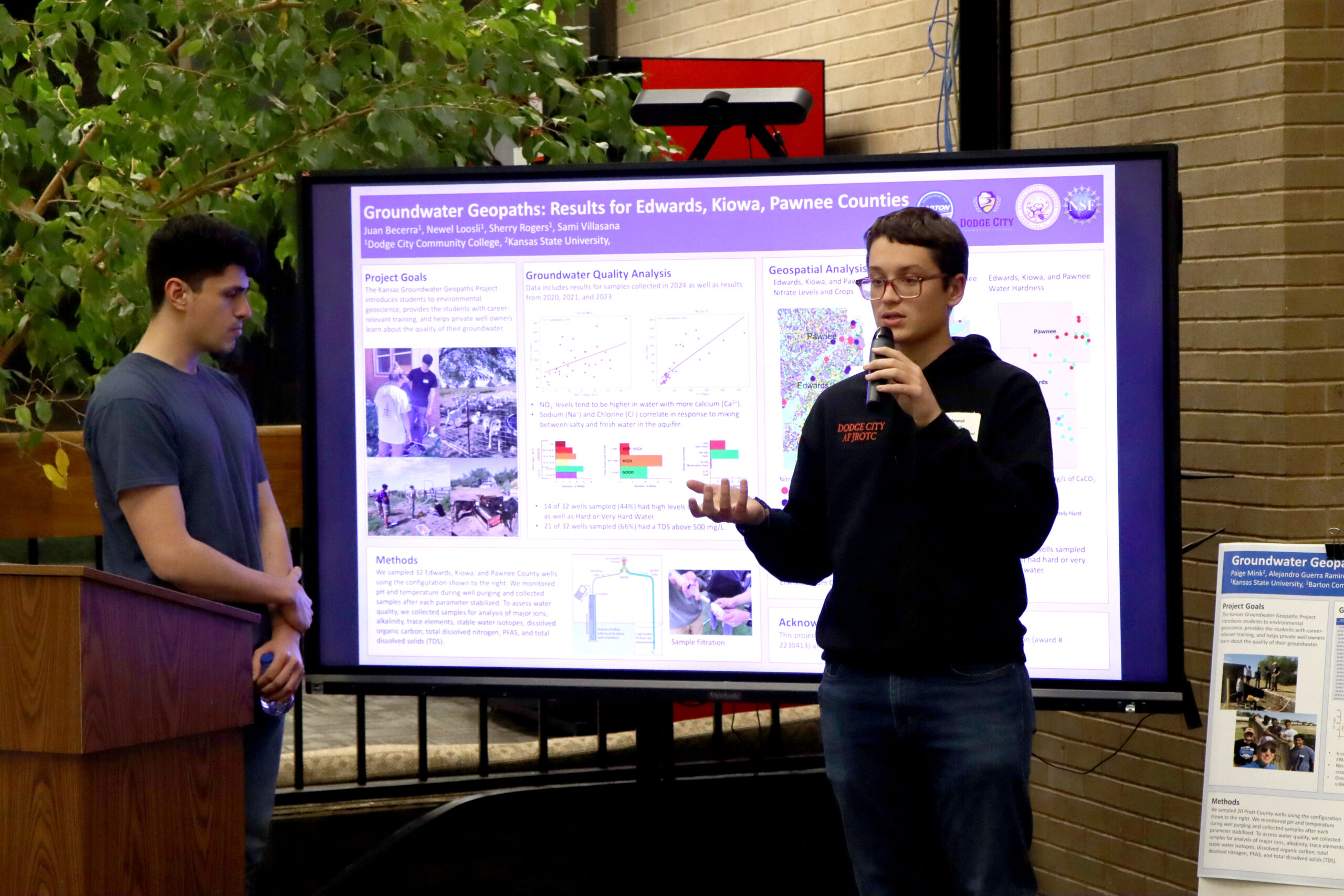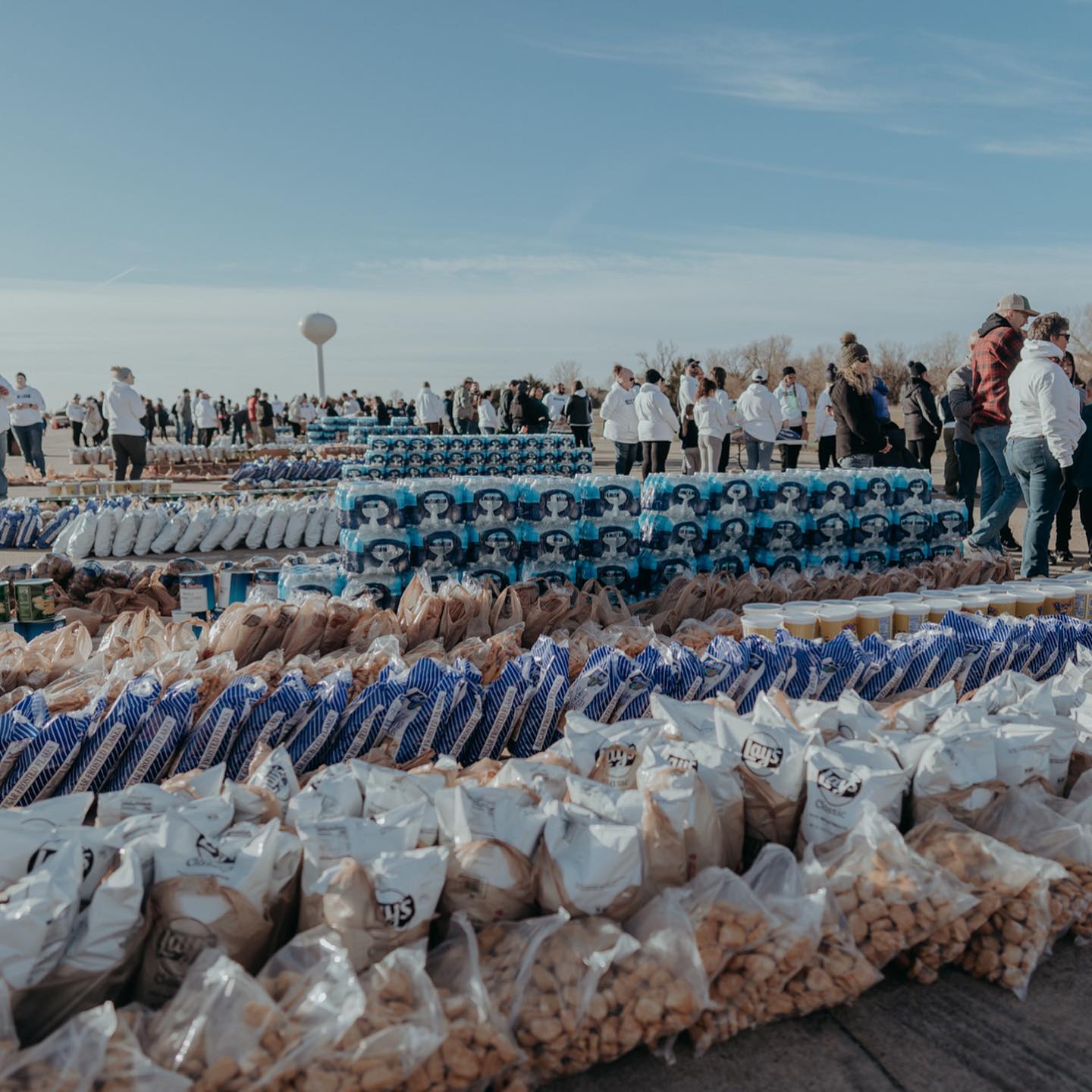A Kansas State University plant pathologist is urging wheat producers to take the time to think through the timing and type of fungicide they may be applying to their crop this spring.
Kelsey Andersen Onofre said that some producers are considering an early fungicide application -– perhaps between the green-up and jointing stages – but there are important points to consider while thinking through that option.
“An early application can be economical for the producer in some scenarios,” she said. “Usually that (application) will go in with a fertilizer or herbicide application, so we might put that in the tank at the same time. Some studies have shown that there can be small yield benefits of an early fungicide application; it doesn’t happen in all years and in all environments.”
Andersen Onofre said some of the fungal diseases commonly seen in Kansas fields include stripe rust and leaf rust. Eastern Kansas farmers also are wary of the rusts, as well as leaf spot diseases such as tan spot and Septoria tritici blotch which are more common in no-till wheat on wheat rotations, as the fungi survive in wheat residue.
“Early fungicide applications may stem early disease development and protect the lower canopy of the crop,” she said. “This may prevent these fungi from moving to the upper canopy as easily later in the season.”
Andersen Onofre said it’s important to remember that early season applications are not a substitute for flag leaf applications, which can provide a much higher yield benefit when the environment is conducive for disease. The flag leaf in wheat is the last leaf to emerge and drives about 75% of grain yield.
“Those flag leaves drive much of our yields in wheat,” Andersen Onofre said. “With an early fungicide application, those leaves are not protected.”
“One of the things to think about regarding an early application is that a lot of these fungicides have use restrictions that limit the amount of active ingredient that can be applied in a season,” Andersen Onofre said. “So, if you know you want to apply (a product) early in the season, you would maybe lose the ability to apply that same product later in the season.”
One option, she notes, is a split-rate application, in which the producer makes two passes with the same fungicide.
“There are a few products available where, for example, the full application rate is 10 fluid ounces per acre, but they have a special label that allows you to make one five ounce application early, followed by another five ounce application later,” Andersen Onofre said. “Not all products have that type of special label, so it’s really important to plan both applications accordingly.”
“Alternatively, some products have lower rates labeled for early season disease suppression, where a lower rate can be applied with your herbicide or fertilizer and a later full rate application may be made at flag leaf.”
Each year, Kansas State University and universities around the country compile data on the efficacy of fungicides on wheat. The most current data is now available online in the publication, Foliar Fungicide Efficacy Ratings for Wheat Disease Management.
Andersen Onofre said the publication includes research-based information on efficacy of widely available fungicides in Kansas. She also notes the importance of paying attention to disease scouting reports in the producer’s area, knowing the vulnerabilities of wheat varieties, and knowing overall crop condition and estimated yield potential.
Wheat badly damaged this year by drought or cold injury may not be the best candidate for an early application, she said.
“We try to put as much information in (the publication) as possible, but it doesn’t replace reading the label of the fungicides you’re using,” she said. “It’s always good to read labels to make sure you’re in compliance with what’s written when choosing a fungicide.”
K-State also publishes an annual wheat variety guide to help producers understand the susceptibility of varieties they are currently growing, as well as those they may want to plant later this year. Varieties highly susceptible to the diseases would be better candidates for fungicide applications.
More information also is available at local K-State Research and Extension offices in Kansas. Local extension agents can help producers work through a chemical management program for wheat.



